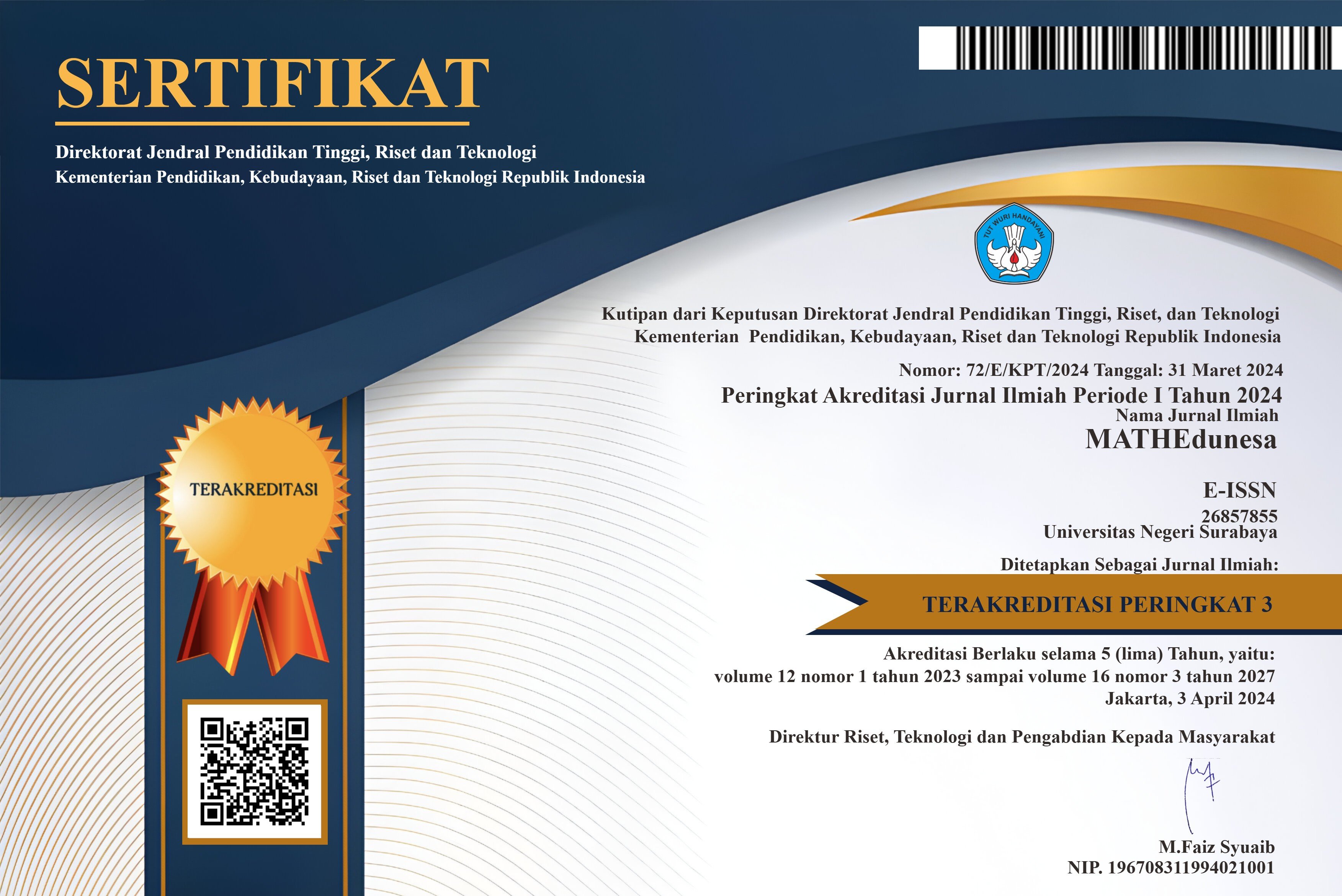Horizontal and Vertical Mathematization Processes of Junior High School Students in Solving Open-Ended Problems
DOI:
https://doi.org/10.26740/mathedunesa.v12n2.p400-413Downloads
Download data is not yet available.
Downloads
Published
2023-07-09
Issue
Section
Articles
 Abstract views: 128
,
Abstract views: 128
, PDF Downloads: 197
PDF Downloads: 197




